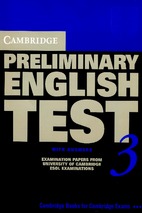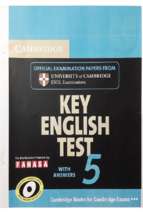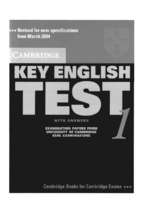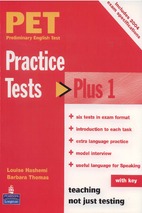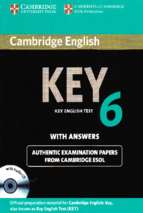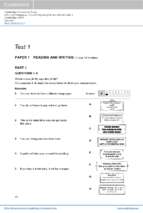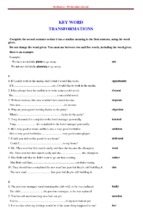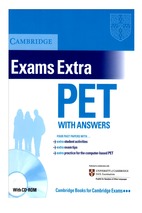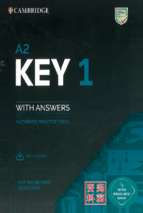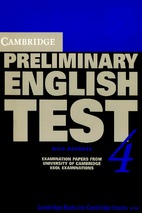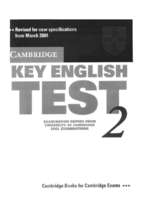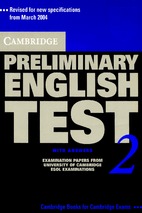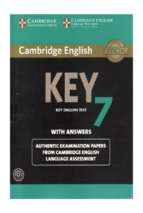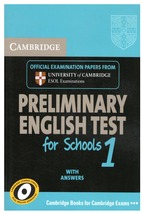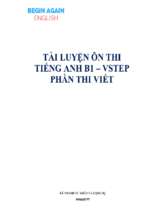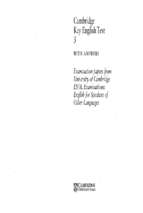VIETNAM NATIONAL UNIVERSITY, HA NOI
UNIVERISTY OF LANGUAGES & INTERNATIONAL STUDIES
FACULTY OF POST-GRADUATE STUDIES
TRƯƠNG MINH CHÂU
A NEED ANALYSIS OF AN INTERACTIVE WEBSITE TO
ENHANCE LEARNING AUTONOMY FOR UNDERGRADUATES
MAJORED IN ENGLISH FOR ELECTRICAL ENGINEERING AND
ELECTRONICS
(Phân tích nhu cầu của website hỗ trợ cho việc tự học cho sinh viên học
tiếng Anh chuyên ngành Điện – Điện tử)
M.A. MINOR PROGRAMME THESIS
Major: English Language Teaching Methodology
Code: 8140231.01
HANOI – 2020
VIETNAM NATIONAL UNIVERSITY, HA NOI
UNIVERISTY OF LANGUAGES & INTERNATIONAL STUDIES
FACULTY OF POST-GRADUATE STUDIES
TRƯƠNG MINH CHÂU
A NEED ANALYSIS OF AN INTERACTIVE WEBSITE TO ENHANCE
LEARNING AUTONOMY FOR UNDERGRADUATES MAJORED IN
ENGLISH FOR ELECTRICAL ENGINEERING AND ELECTRONICS
(Phân tích nhu cầu của website hỗ trợ cho việc tự học cho sinh viên học
tiếng Anh chuyên ngành Điện – Điện tử)
M.A. MINOR PROGRAMME THESIS
Major: English Language Teaching Methodology
Code: 8140231.01
Supervisor: Nguyễn Thị Minh Trâm, Ph.D.
HANOI – 2020
DECLARATION
I, Truong Minh Chau, hereby certify that my thesis submitted to the Faculty of PostGraduate Studies, University of Languages and International Studies, Vietnam
National University, Ha Noi is my own work. Documented references have been fully
provided. I have not submitted this thesis for assessment in any other training
institutions.
Hanoi, 2020
Truong Minh Chau.
i
ACKNOWLEDGEMENTS
First, I would like to express my special and sincere thanks to my supervisor, Ph.D
Nguyen Thi Minh Tram, who gave me enthusiastic instructions, precious support
and critical feedback on the construction of the study.
Second, I also express my profound gratitude to all doctors, lecturers and staff
members of the Faculty of Postgraduate Studies, University of Foreign Languages
and International Studies, Vietnam National University, Hanoi for their valuable
lectures and useful advice that is of a great help for me to fulfil the thesis.
Next, I would like to send my deep sense of thanks to the 17 undergraduates, 2
lecturers of the course English for Electrical Engineering and Electronics, and
other lecturers from School of Foreign Languages, Hanoi University of Science
and Technology and other 5 alumni of the technical English-majored programs for
their cooperation and the valuable information they provided in my research field.
Then, I am also thankful to many writers whose ideas are useful hints for the
development of this thesis.
Finally, I desire to give special thanks to all of my family members, colleagues and
friends who inspire and encourage me side-by-side throughout working on the
research.
ii
ABSTRACT
This research, taken place in a technical university in Hanoi, aims at investigating the
technical English-majored undergraduates’ needs in learning English for Electrical
Engineering and Electronics (EEEE), then to propose some specifications of an
interactive website to enhance their learning autonomy. Qualitative data was
collected from in-depth interviews with EEEE undergraduates, graduates and
lecturers. The first section of in-depth interviews was conducted with 17
undergraduates from a technical university in Hanoi to collect data about the learners’
difficulties, their needs of an interactive website. Moreover, the needs of the
undergraduates from academic institute and workplace perspectives are studied with
other two sections of the interviews with lecturers and graduates. The findings show
that the undergraduates’ difficulties were associated with their knowledge of
technical areas, memorization of technical terms, communicative skills and
information analysis skills. Regarding the specifications, the website need a balance
between learning and working environment and some other features such as vivid
illustration and interactive between the users. Lastly, some key features and design
of the website are provided based on the expected learning outcomes for the learners
to learn and work effectively with the necessary competencies, the assessment of the
website and the instructional plans for an interactive website. Some suggestions and
recommendations for constructing an interactive website namely bilingual news
reading comprehension, exercises for improving knowledge, memorizing technical
terms, improving communicative skills are included in the conclusion. The researcher
hopes that the result from the study could help the ESP course developers, lecturers
and education website constructors in the process of an interactive website design to
enhance the undergraduates’ learning autonomy.
iii
ABBREVIATIONS
ESP
English for Specific Purposes
EEE
Electrical Engineering and Electronics
EEEE
English for Electrical Engineering and Electronics
NA
Needs Analysis
TSA
Target Situation Analysis
LNA
Learning Needs Analysis
Under_EEEE
Undergraduates having experienced the course English for
Electrical Engineering and Electronics
Under_FM
Undergraduates learning at first year, have not experience the
course English for Electrical Engineering and Electronics
Lect
Lecturers
Grad
Graduates
iv
CONTENTS
DECLARATION ......................................................................................................... i
ACKNOWLEDGEMENTS ....................................................................................... ii
ABSTRACT .............................................................................................................. iii
ABBREVIATIONS ................................................................................................... iv
CONTENTS ............................................................................................................... v
CHAPTER 1: INTRODUCTION............................................................................... 1
1.1. Rationale of the study ................................................................................... 1
1.2. Aims of the research ..................................................................................... 2
1.3. Research questions ........................................................................................ 2
1.4. Scope of the study ......................................................................................... 2
1.5. Method of the study ...................................................................................... 3
1.6. Significance of the study ............................................................................... 3
1.7. Organization of the study .............................................................................. 3
CHAPTER 2: LITERATURE REVIEW.................................................................... 5
2.1. English for Specific Purpose ......................................................................... 5
2.1.1.
Overview of ESP ................................................................................ 5
2.1.2.
English for Electrical Engineering and Electronics ............................ 7
2.2. Needs Analysis .............................................................................................. 8
2.2.1.
Overview of Needs Analysis .............................................................. 8
2.2.2.
Needs Analysis Frameworks .............................................................. 9
2.3. Learning autonomy ..................................................................................... 11
2.3.1.
Overview of learning autonomy ....................................................... 12
2.3.2.
Principles for a website design in developing learners’ autonomy .. 13
2.4. Application of technology in enhancing learning autonomy in ESP .......... 15
v
2.4.1.
Overview ........................................................................................... 15
2.4.2.
Application of technology in the process of learning language ....... 16
2.5. Summary ..................................................................................................... 17
CHAPTER 3: METHODOLOGY ............................................................................ 19
3.1. Context of the study .................................................................................... 19
3.2. Participants .................................................................................................. 19
3.3. Research design .......................................................................................... 20
3.4. Data collection instruments......................................................................... 21
3.5. Data collection procedure ........................................................................... 21
3.6. Data analysis methods and procedure ......................................................... 22
CHAPTER 4: FINDINGS AND DISCUSSION ...................................................... 23
4.1. Difficulties in learning English for Electrical Engineering and Electronics
23
4.1.1.
Difficulties in researching and analyzing necessary information ..... 23
4.1.2.
Other difficulties in learning EEEE .................................................. 25
4.1.3.
Conclusion ........................................................................................ 27
4.2. Key EEEE competencies and their learning preferences............................ 27
4.2.1.
Key EEEE competencies .................................................................. 27
4.2.2.
Learners’ preferences of learning activities ...................................... 28
4.3. Undergraduates’ needs of an interactive website ....................................... 31
4.3.1.
Reason for taking the course............................................................. 32
4.3.2.
Expectation towards the course ........................................................ 33
4.3.3.
Difficulties in the workplace ............................................................ 35
4.3.4.
Needs of an interactive website ........................................................ 37
4.4. Summary ..................................................................................................... 38
vi
4.4.1.
Expected learning outcomes ............................................................. 38
4.4.2.
Assessment on the website ............................................................... 40
4.4.3.
Instructional plans ............................................................................. 41
a)
Content of the website ............................................................................. 41
b)
Interface of the website............................................................................ 45
4.5. Conclusion .................................................................................................. 45
CHAPTER 5: CONCLUSION ................................................................................. 47
5.1.
Implications .......................................................................................... 47
5.2.
Limitations of the study ....................................................................... 48
5.3.
Suggestions for further study ............................................................... 48
REFERENCES ......................................................................................................... 49
APPENDICES ............................................................................................................. I
APPENDIX 1: The grade of undergraduate participants ........................................ I
APPENDIX 2: The highlighted information about the graduates ..........................II
APPENDIX 3: The application of Hutchinson and Waters (1987)’ learning needs
analysis framework in developing the research instruments ................................ III
APPENDIX 4: The application of Hutchinson and Waters (1987)’ target situation
analysis framework in developing the research instruments ............................... VII
APPENDIX 5: Descriptions of participants in interviews ................................... IX
APPENDIX 6: Questions for in-depth interview 1 – Undergraduates ................. XI
APPENDIX 7: Questions for in-depth interview 2 – Lecturers ........................ XIII
APPENDIX 8: Questions for in-depth interview 3 – Graduates ........................ XV
APPENDIX 9: Summary of significant findings - Undergraduates................. XVII
vii
CHAPTER 1: INTRODUCTION
1.1.
Rationale of the study
With the growing need of using English internationally in the fields of science and
technology, English for Specific Purpose (ESP) in general, and English for Science
and Technology (EST) in particular have already marked their role in the multilingual
and digital world of exponential developments for some recent decades. Importantly,
according to Huhta, Vogt, Johnson and Tulki (2013), the matter of ESP “should be
redirected away from foreign language education and towards training in
communication for professional purposes… The content of ESP course should be
based on evidence, not teacher intuition”. This means, ESP should not be regarded as
the process of “reading” or “translating” the ESP documents, but the development of
productive skills namely written and oral communication in ESP. Moreover, the
content development for ESP course should be deeply grounded from the research
findings with relevant stakeholders rather than only based on the institute decisions
from the course designers’ or lecturers’. In addition, the needs of English for
Electrical Engineering and Electronics (EEEE) in EST, especially the application of
EEEE in Vietnam is still under-researched.
On the other hands, for ages, learning through the Internet have developed, especially
learning through a specific website due to its large amount of information and data
with diverse appearance attracting the learners. Experiencing the course by herself,
the researcher thoroughly comprehended and shared the difficulties in learning EST
with the technical English-majored undergraduates in learning EEEE in the research
context. Therefore, the growing needs of a specific website to research and study
technical knowledge has been the desire of many technical English-majored
undergraduates who are overwhelming with a large, diverse but unsuitable-withpurpose amount of information on the Internet. Moreover, in the situation when the
effect of Covid-19 is spreading throughout the world, E-learning and blended
learning can be beneficial. Thus, the growing needs of a majority of schools, colleges,
universities and other education institutions in Vietnam on planning to contribute a
system of E-learning, website to serve for blended learning in the future have been
mushrooming. As a role of a technical university, applying blended learning and the
1
achievement of technology era is necessary. On planning to catching up with the
situation, lecturers and technical English-majored undergraduates find it is necessary
to develop an interactive website on technical English, starting with English for
Electrical Engineering and Electronics.
The researcher has once experienced the course EEEE, as well as, have taught the
course. In addition, under the approval of the researcher’s current workplace on
designing an interactive website for undergraduates, especially undergraduates
learning EST from technical universities and colleges, the exploration of
undergraduates’ needs is important. Therefore, the researcher to conduct a research
in order to explore the undergraduates’ needs in learning EEEE for the proposal of an
interactive EEEE website with its distinctive features, functions and contents for
more effective learning and workplace preparation.
1.2.
Aims of the research
The aim of the study is to explore the technical English-majored undergraduates’
needs of learning EEEE for the development of an interactive website to enhance
their learning autonomy. Specifically, the objectives of the study are:
-
To investigate the difficulties that the undergraduates have encountered in
learning EEEE
-
To investigate their needs to develop an interactive website to stimulate the
learners’ learning autonomy.
1.3.
Research questions
In order to achieve the objectives stated above, the following research questions are
as follows.
1. What are difficulties that the undergraduates have experienced in the process
of learning English for Electrical Engineering and Electronics?
2. What are necessary EEEE competencies and learning activities to enhance
their learning autonomy?
3. What are the undergraduates’ needs of an interactive website designed to
enhance the undergraduates’ autonomy in learning English for Electrical
Engineering and Electronics?
1.4.
Scope of the study
2
The present study only investigates the learners’ difficulties in learning EEEE and
their needs of an interactive website from the perspectives of technical Englishmajored undergraduates, graduates and lecturers. In addition, the research was only
conducted at a technical university in Hanoi. Besides, this website only aims at
helping the learners develop their EEE competencies for more effective learning and
future workplace. Therefore, a website for other purposes is out of the scope of
inquiry.
1.5.
Method of the study
In-depth interviews with English-majored undergraduates, graduates and lecturers
were conducted in a qualitative research design to gain the insights into their
difficulties, and needs of an interactive website in learning EEEE. The participants
include 17 undergraduates, 2 lecturers and 5 graduates from technical English
majority program in a university in Hanoi. The recordings of the interviews were
transcribed and analysed qualitatively using qualitative data analysis techniques
suggested by Miles and Huberman (1994).
1.6.
Significance of the study
The study aims at providing an investigation on the needs and a suggestion proposal
the development of an interactive website. Therefore, the result of the study with
recommendation for website construction are also included and highlighted in order
to support further research of English for Electrical Engineering and Electronics,
English for Science and Technology in practical and for English for Specific Purpose
in general.
1.7.
Organization of the study
The study is divided into six chapters:
Chapter 1: Introduction, the researcher provides an overview of the research with
specific information about rationale, aim and objectives of the research, the research
questions, the scope, the methodology and the structure of the research
Chapter 2: Literature review, the researcher reviews the literature related to the
abstract: English for Specific Purpose, English for Electrical Engineering and
Electronics, Learning autonomy, Needs Analysis and the application of technology
in the current situation.
3
Chapter 3: Methodology, the researcher gives a detailed discussion of the method
used in the study. It presents the context of the study, participants, data collection
instrument and data analysis methods and procedures
Chapter 4: Data analysis and Findings, the researcher give a detail description of data
analysis and discussion of the findings of the study. This focuses on analyzing and
discussing the results gained from the study based on the in-depth interviews.
Chapter 5: Recommendation, this chapter provides some suggestions for the
development of the website in the future.
Chapter 6: Conclusion, the researcher summarizes the key points in the study,
represents the recapitulation of the main points presented in the research and
concluding remarks. This chapter also includes the limitations of the study and some
recommendation for further research.
4
CHAPTER 2: LITERATURE REVIEW
2.1.
English for Specific Purpose
2.1.1. Overview of ESP
Throughout the history, the matter of ESP has been launched, discussed and
researched differently by various researchers. Since 1960s, it has been regarded as a
vital and innovative activity within the Teaching of English as a Foreign Language
Movement (Howattm, 1984; as cited in Dudly-Evans & St John, 1998).
The definition of ESP has been mentioned according to Hutchinson & Waters (1987),
which is an approach to language teaching in which all decisions as to content and
method are based on the learner’s reason for teaching. In addition, Strevens (1998,
p.1) also defines ESP as a particular case of general category of special purpose
language teaching. Moreover, Belchers shares the thinking that the matter of ESP is
to address learners’ own specific language purposes.
Hutchinson and Water (1987) classify ESP into two branches: English for Scientific
Study (EST), English for Business and Economics, English for Social Study, which
made up to English for Academic Purposes and English for Professional Purposes.
Besides the Trichotomy of Hutchinson & Waters, Jordan (1997) is also divided ESP
into two main branches, which are English for Occupational Purposes (EOP) and
English for Academic Purposes (EAP).
Figure 1: Jordan (1997) ESP Dichotomy
To extend the matter of ESP, Rahman (2015) has also mentioned the area of English
for Science and Technology (EST), which is considered as the focal area, whereas
the EOP involes work-related needs and training. However, English for Medical
Purposes and English for Legal Purposes have always gained their places. More
recently, English for Management, Finance and Economics has increasingly been
important to Master of Business Administration course. According to Robinson
5
(1991, p.21), EOP involves work-related needs and training. EOP includes
professional purposes in administration, medicine, law and business, and vocational
purposes for non-professional in work or pre-work situation (Dudley-Evans & St.
John, 1998). In the research, due to the time constraint, the researcher decides to
follow the classification of Jordan (1997), which mainly focuses on the matter of
English for Science and Technology (EST) as English for Academic Purposes, taking
consideration in the process of academic situation of a technical university in
Vietnam.
Regarding the specific features of ESP, according to Strevens (1980), Robinson
(1991), Dudley-Evans and St. John, (1997), etc., who have agreed that an ESP course
should have the following absolute and variable features:
Absolute features:
ESP is designed to meet specific needs of the learner.
ESP makes use of the underlying methodology and activities of the disciplines it serves.
ESP is centered on the language (grammar, lexis, and register), skills, discourse and genres appropriate
to those activities.
Variable features:
ESP may be related to or designed for a specific disciplines, which based on the needs of the learners.
ESP may use, in specific teaching situations, in different methodology from “General English”
ESP is likely to be designed for adult learners, either at a tertiary level institution or in a professional
work situation.
ESP is generally designed for intermediate or advanced learners. Most ESP courses assume basic
knowledge of the language system, but it can be used with beginners.
With the specific purposes in mind, the learners should know clearly what they need
to learn and they will learn with high motivation what they find useful for their work
later or at present. However, in some situations, the learners may not realize and
distinguish the matter of what they are interested in and what they need for their future
careers. As a result, consideration for professional purposes in collaboration with
teacher intuition should be improved to develop an ESP course. In other words, the
developers should consider the aim of their learners’ successful performance of
occupational roles by exploring their needs as well as, the differences between ESP
and general language course regarding its selective skills, themes, topics, situation,
functions, language and methodology.
6
2.1.2. English for Electrical Engineering and Electronics
Although English for Electrical Engineering and Electronics (EEEE) is included in
the process of learning EST, its definition of EEEE is not available yet in the
literature. Other fields may be included in EST along with EEEE should be English
for Mechanical Engineering and Materials, English for Information Communication
Technology, English for Environmental Science, etc. Based on the current coursebook relating to EEEE of Glendining (1980), Sinclair & Dunton (2007) and the
course-book of a technical university in Hanoi, Vietnam (School of Foreign
Language, 2016), some common features are as follows.
(1) The course-books are mainly developed according to content-based approach, which focus on
providing information for the learners on the Electrical-relating topics such as Electrostatic forces, the
structure of matter, electric current, electromotive force, electric circuits, DC generators & motors,
etc.
(2) The course-books concentrate on developing the two main areas: technical terminology and reading
comprehension. Although Glendining (1980) includes some grammatical exercise and the coursebook of the technical university in Hanoi includes communicative and listening skills, it still focuses
on the matter of accumulating technical terms and knowledge rather than developing communicative
skills.
The course of EEEE mainly focuses on delivering the knowledge rather than skills,
especially the basic knowledge of Electrical Engineering and Electronics for the
learners in order to create a foundation for them in future careers. However, the
research about the learning needs of the undergraduates have not been conducted
thoroughly and officially, the teachers or the lecturers mainly contribute the coursebooks based on their experience rather than the undergraduates’ needs about the
course. Therefore, in the current study, the undergraduates’ competencies including
knowledge, skills and attitude (Council of Europe, 2001) in EEEE will be explored
for better understanding of their needs.
In conclusion, under the situation when ESP is widely regarded under vocational
orientation rather than academic one, the matter of EEEE, which is still mainly
considered as content-based orientation should be improved. In addition, EEEE
should be regarded based on the needs of learners. In other words, studying on
7
learners’ difficulties and necessary competencies they should accumulate after the
course in order to help them learn and work effectively is important.
2.2.
Needs Analysis
Due to the fact that the ESP course is developed regarding to the needs of learners,
the role of Need Analysis before designing an ESP course is considered as the key
stage. In language teaching, NA is considered as the corner stone of ESP and leads to
a focuses course. Strevens suggests that NA is a necessary first step for specific
purposes language teaching. In addition, Hutchinson and Waters (1987) also argue
that “any language course should be based on needs analysis”, Hamp-Lyons (2001)
opines that needs analysis is a fundamental component to and ESP approach in term
of course design.
According to Hutchinson & Waters (1987), the matter of designing an ESP course
lies towards inter-relationship among three elements: (1) Methodology, which is
reflected by Learning theories, (2) Syllabus, which is reflected by the language
description and (3) the nature of particular target, which is reflected by Need
Analysis. The main concentration of the researcher is to research the literature
relating to the development of an interactive website to enhance the autonomy for
learners in the process of learning the course English for Electrical Engineering and
Electronics. As regarded from the previous part in the analysis, both the conclusions
of developing an ESP course and enhancing learners’ autonomy relate to the matter
of Needs Analysis, in which the research should investigate on the needs, necessities,
difficulties, wants, etc. of the learners before developing a website as a supplement
tool in the process of learning. Hence, the understanding of the researcher towards
the matter of Need Analysis is necessary in order to adapt both the development on
the content of the website and the motivation of learners in the process of selfstudying.
2.2.1. Overview of Needs Analysis
The term “analysis of needs” first appeared in the 1920’s in West Bengal, a province
of India when Michael West introduce the concept of “needs” to cover what learners
will be required to do with the foreign language in the target situation and how
learners might best master the language during the period learning (Rahman, 2015).
8
Regarding to the definition, Dudley-Evans and St. John (1997) defines NA as “the
process of establishing the what and how of a course”. They argue that “need analysis
in neither unique to language teaching-needs assessment. For example, in the basic
of training programs and aid-development, programs- nor, within language training,
is unique to Language for Specific Purpose and thus to ESP”
Dudley-Evans and St. John (1997) also stress three aspects about the aim of NA is to
know: (1) learners as people, as language users and as language learners, (2) how
language learning and skills learning can be maximized for a given learner group and
(3) the target situations and learning environment. As a result, the data can
appropriately be interpreted.
2.2.2. Needs Analysis Frameworks
Different components of language needs analysis are employed to investigate
different focuses and issues in language planning, development, teaching and
learning. There are also several ways in which NA approaches are classified
depending towards the concept of needs or the purposes of the learners. For example,
Munby (1978) provides “Communication Needs processors” to identify the
communication needs of the target learners. The outcome of this framework is the
profile of needs of the learners. It is regarded to have tendency on the design of
communicative syllabus. However, the needs is not taken from different standpoint
and does not relate to other elements, but take learners as the only sources. In addition,
the framework produces an unordered list of linguistics features, which make the
researcher unable to decide what should be focused on. Moreover, the
interrelationship among the linguistic features are not reflected thoroughly.
Another framework, which is developed from the result of Munby’s work, provides
the used of an integrated procedure for NA by McDnough (1984) (as cited in Rahman,
2015). This framework occurs the limitations that it does not mention the lacks,
wants, etc. in the procedures.
To extend the work of McDonough (1984), Hutchinson and Waters (1987) expand
NA into the matter or Target Situation and Learning needs analysis. Therefore, the
two components Target Situation Analysis (TSA) and Learning Needs Analysis
(LNA) should be focused on in the research.
9
a) Target Situation Analysis
The TSA approach is initially adopted in the early stage of NA in ESP (Dudley-Evans
& St. John, 1998). Accordingly, the purpose of TSA was to identify he tasks and
activities the learners will use English for professional communication information.
In addition, they also explain as “TSA includes objective, perceived and productoriented needs. The objective and perceived needs are derived by outsiders from facts,
from what is known and can be verified. Therefore, “to be able to spell English words
correctly” is an objective / perceived need. Product-oriented needs are derived from
the goal or target situation”. Robinson (1991) conclude that “a needs analysis, which
focuses on learners’ needs at the end of language course, can be called a TSA”.
Before designing a course, learners should know why they are taking the course an
how they will apply that learning. Also English language teachers or lecturers should
know what kind of task and activities learners will be using Eglish for (Kandil, 2003)
(as cited in Abu-Rizaizah, 2005). In order to investigate the matter of TSA,
Hutchinson and Waters (1987) suggested the following questions as a start-point to
uncover relevant information.
Why is the language needed?
How will the language be used?
What will the content areas be?
Who will the learners use the language with?
When / Where will the language be used?
(Hutchinson and Waters, 1987, p.63)
The suggested questions from Hutchinson and Waters can be adapted differently and
flexibly depending upon each research and the objectives of the researcher. For
example, in this research, the researcher mainly focuses on two first questions “why
is the language needed?” and “How will the language be used?” to figure out the
application of the course EEEE and EEE in workplace.
b) Learning Needs Analysis
According to Robinson (1991, p.8) “Learning needs analysis (LNA) seeks to establish
what the learners are like at the start of their language course, investigating their
strengths and weaknesses in language, skills and learning experiences”. Whereas
Dudley-Evans and St. John (1998) believe that LNA estimates strength and
10
weaknesses in language, skills and learning experiences. Jolly and Bolitho, 1998, also
share this ideas by stating that TSA refers to learners’ language difficulties, their
learning objectives, their styles of learning. In conclusion, tt can be said that the
matter of LNA relates to the learners (their learning experience, cultural information,
reasons and expectation, their attitudes to English) and learners’ current skills, as well
as, language use environment. There are some questions recommended by
Hutchinson and Waters (1987) for the researcher to analyse the matter of LNA as
follow:
Why are the learners taking the course?
How do the learners learn?
What resources are available?
Who are the learners?
When / Where will the course take place?
(Hutchinson and Waters, 1987, p.63)
The development of the detailed research questions in order to study the needs of the
learners may depend on the researcher and the current situation of the research. In
this research, the researcher only obsolete the last question about the time and place
the course would take place, but adapt the first four questions.
Under consideration on the purpose of the research, the framework of Hutchinson
and Waters (1987) is applied in the present study regarding to the set of questions of
target situation and learning needs analysis framework for some reasons. Firstly, the
framework provides a list of questions for learning needs analysis, which is useful
and suitable for the process of developing the research instruments. Secondly, the
research purpose is conducted with a sequence of questions for an in-depth intervew.
Thus, the framework by Hutchinson and Waters (1987), which provides the detailed
questions for learning needs and target needs analysis seem to be the most
comprehensive and suitable for the aim and objectives of the research.
2.3.
Learning autonomy
Due to the fact that ESP, at some extent, is developed according to the learners’ needs,
the role of learning autonomy and self-studying should be regarded in the process of
developing ESP course and enhanced in the process of learning. In the current
situation that the time in class is limited and the undergraduates in Vietnam should
11
- Xem thêm -



